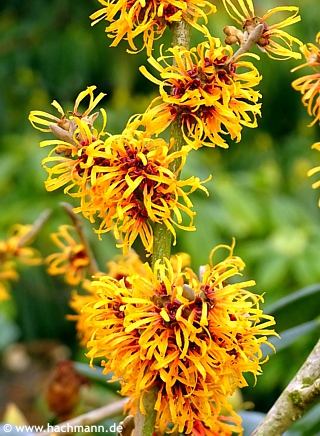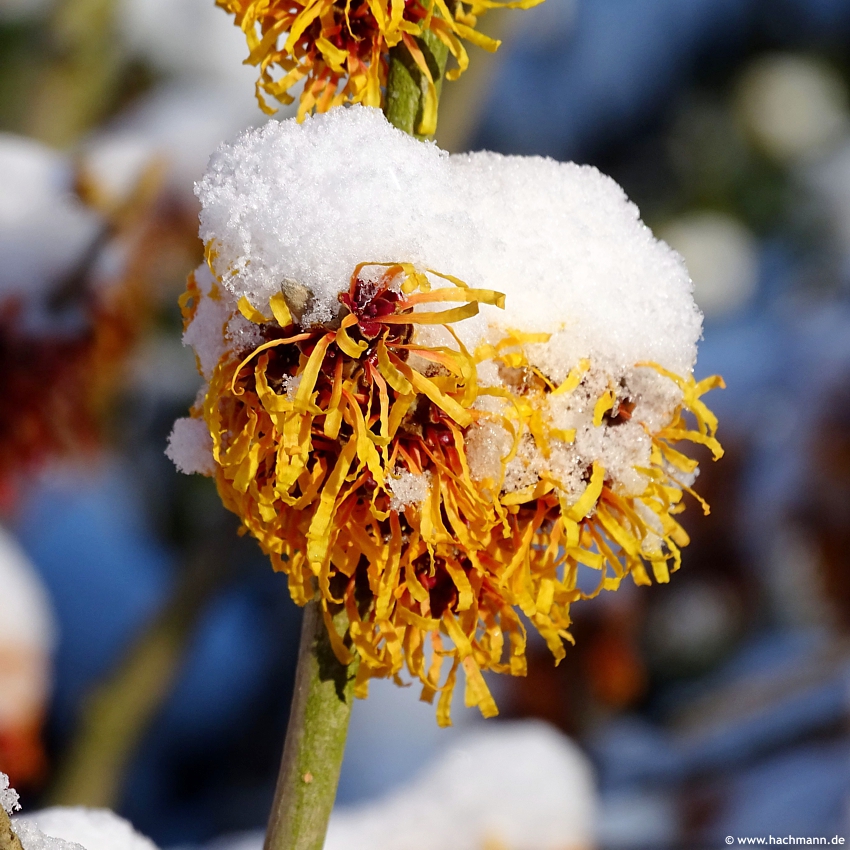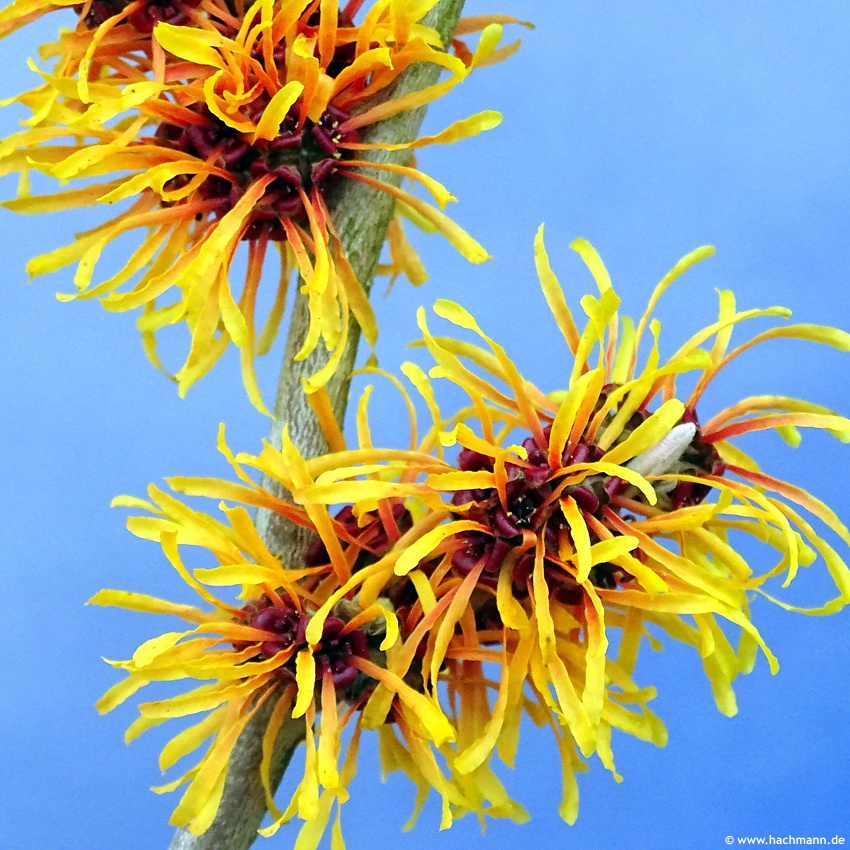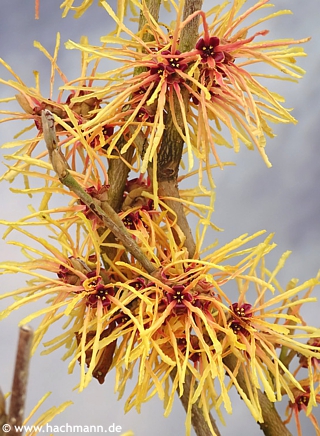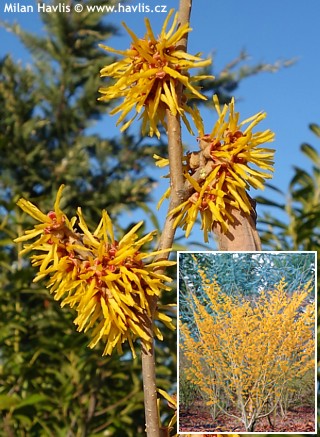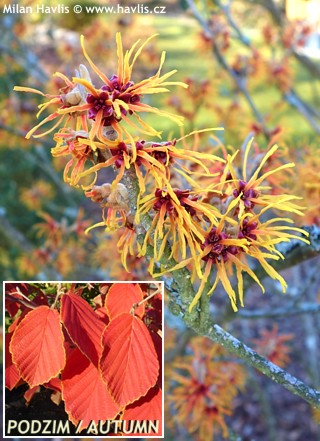Hamamelis x intermedia 'HARRY' witch hazel
size/type
taller shrub,taller shrub
usual height
2-3m
usual width
2-3m
leaves
deciduous broadleaf
colour of leaves
flowers
showy
colour of flowers
blooming time
January-March
location
full to partial sun
soil type
acidic (peaty) to neutral
soil moisture requirements
evenly moist (dislikes drought)
winter protection
for zone 5+6

for zone 7

categorized
Hamamelis
Witch hazels are unique shrubs that offer profuse flowering at times when everything else in the garden looks dull and far from cheerful. Their Latin name hamamelis is a combination of the Greek words hama/homoios (at the same time) and méllon/mílo (apple or fruit) and refers to the fact that the flowers appear at the same time as the ripening seeds from the previous year. In gardens, you will most often encounter hamamelis x intermedia which was first described and named by Alfred Rehder in 1945 at the Arnold Arboretum of Harvard University in Boston, Massachusetts, USA (founded 1872). It was a spontaneous hybrid between one h. mollis shrub planted from seeds sent directly from China by Ernest H. Wilson from his expedition in 1908, and several plants of h. japonica growing nearby that apparently pollinated this shrub. The seeds collected from this h. mollis gave birth to several new plants that were different in appearance and performance, however, one showed superior qualities having the best of both the parents – large flowers and better cold tolerance. They called it Arnold Promise and it became the key plant to all subsequent breeding from which rose many beautifully coloured varieties we appreciate today.Description of the plant:
Harry is a witch hazel variety from 1988 that was bred by Robert de Belder from Hemelrijk Arboretum in Belgium and named after the curator of the Kalmthout Arboretum Harry van Trier. It is a vigorously growing variety whose thin petals are bright amber orange from the middle to the tips, and fiery red closer to the calyx. They are fringe-like, narrow, long, and slightly twisted. It begins to bloom in winter, in its warm part, sometimes already at the turn of January and February, and goes on for up to 8 weeks. In sunny and frost-free weather, it spreads its strong, typically sweetly spicy perfume. Deciduous leaves are large and broadly oval, green in summer and a little red and orange, but mostly yellow in autumn. They are a true highlight in autumn garden. Harry grows fast and upright into a V-shaped shrub of equal height and spread about 3 m in maturity which makes it suitable for almost any garden. The Royal Horticultural Society (RHS) awarded the variety AGM (Award of Garden Merit) in 2012.
Witch hazels need acidic to neutral, moist but well drained soil. They don’t tolerate lime. Young shrubs may be pruned or shaped immediately after flowering, but older plants resent that. Othe other hand there’s one thing you can do: when your shrub gets older and too large, you can remove inferior branches from the lower framework and train it into an elegant multi-stemmed shrub, leaving only a few strong leaders from the ground. It gets practical, too, as you can walk nearer the plant or mow the lawn under it. Having said that makes it important to emphasize not to allow grass grow above the roots some 5-8 years from transplanting. Turf is a great competition especially for young or weak shrubs, mulching, on the contrary, is a great help we recommend at all times. Sunny location or light semi-shade is best. Fully hardy to about -29 °C (USDA zone 5) but exposed sites are not recommended. Not suitable for planters.
Last update 03-02-2024
QUICK PRICE OVERVIEW
CURRENTLY SOLD OUT
WANT TO TRY A SIMILAR PLANT?












